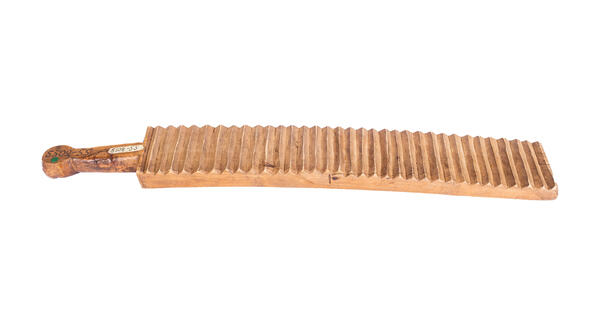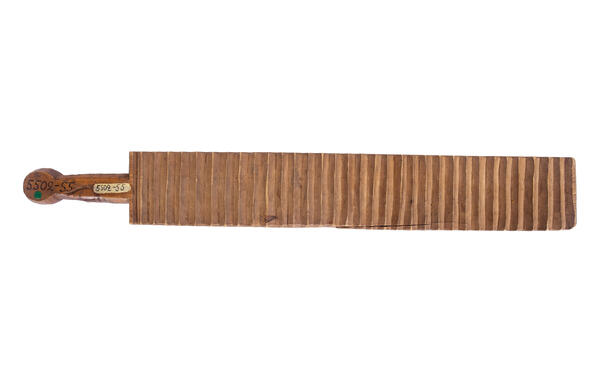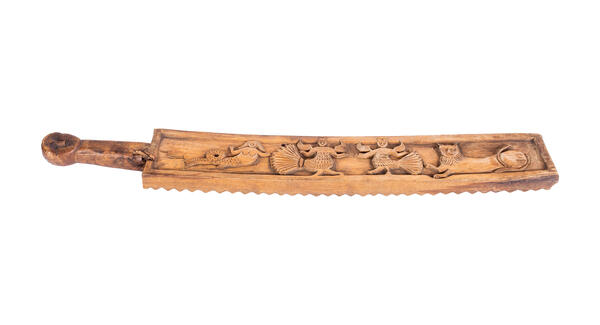The first irons in Russia came into use in the 17th century and did not immediately become widely available. Meanwhile, tablecloths, towels and other homespun items made of linen and hemp after washing and drying became rough, creased and needed to be made smooth again.
A rubel was used for this purpose. It was a long rectangular bar with a handle at the end. The lower working surface had rounded cross grooves, and the upper front surface could be decorated with carving or painting.
A rubel did not smooth out the cloth but rolled it out and kneaded it thoroughly. To do this, the laundry was tightly wrapped on a cylindrical roller and rolled over several times with the ribbed side of the rubel while applying pressure. The washed item became smooth and soft, at the same time the remaining water and dirt were squeezed out of it along with small pieces of trash. The proverb “not by washing, but by rolling” which meant “to get what one wants (cleanliness) in one way or another” is associated with the rubel.
Rubels were made of hardwood: beech, oak, rowan, and birch. In the Russian North, the tool had a hollow in the handle, where dried peas were put. While working, such a rubel would make a sound like a rattle.
Like other household items, the rubel played an important role in rituals. In Southern Russian provinces, the bridesmaids or younger brother tapped the rubel on the table and haggled with the groom’s side for a “maiden’s plait” or the groom’s place at the feast:




